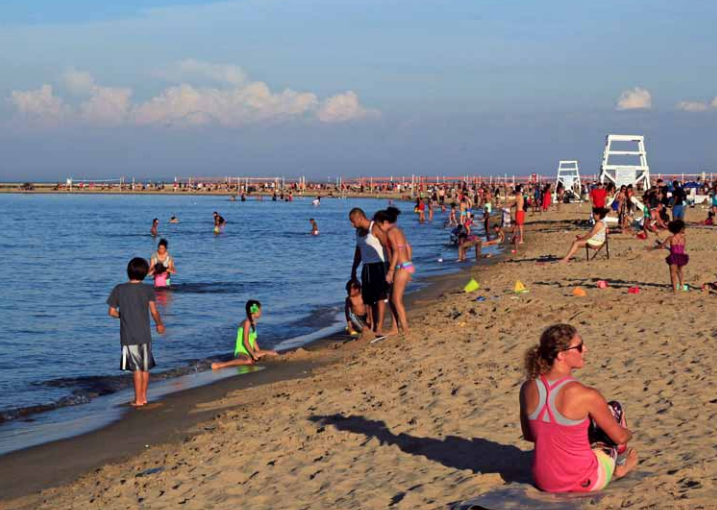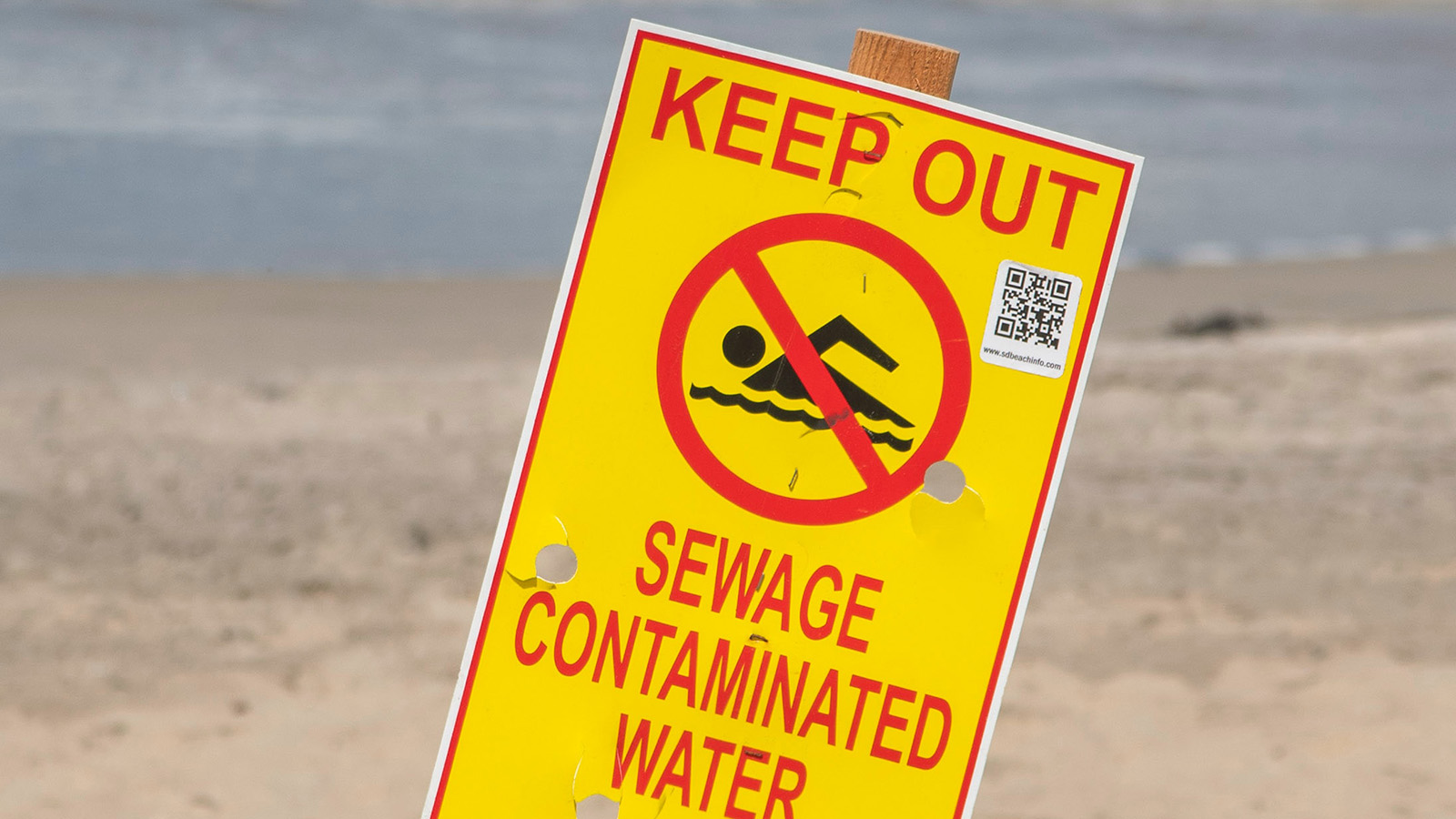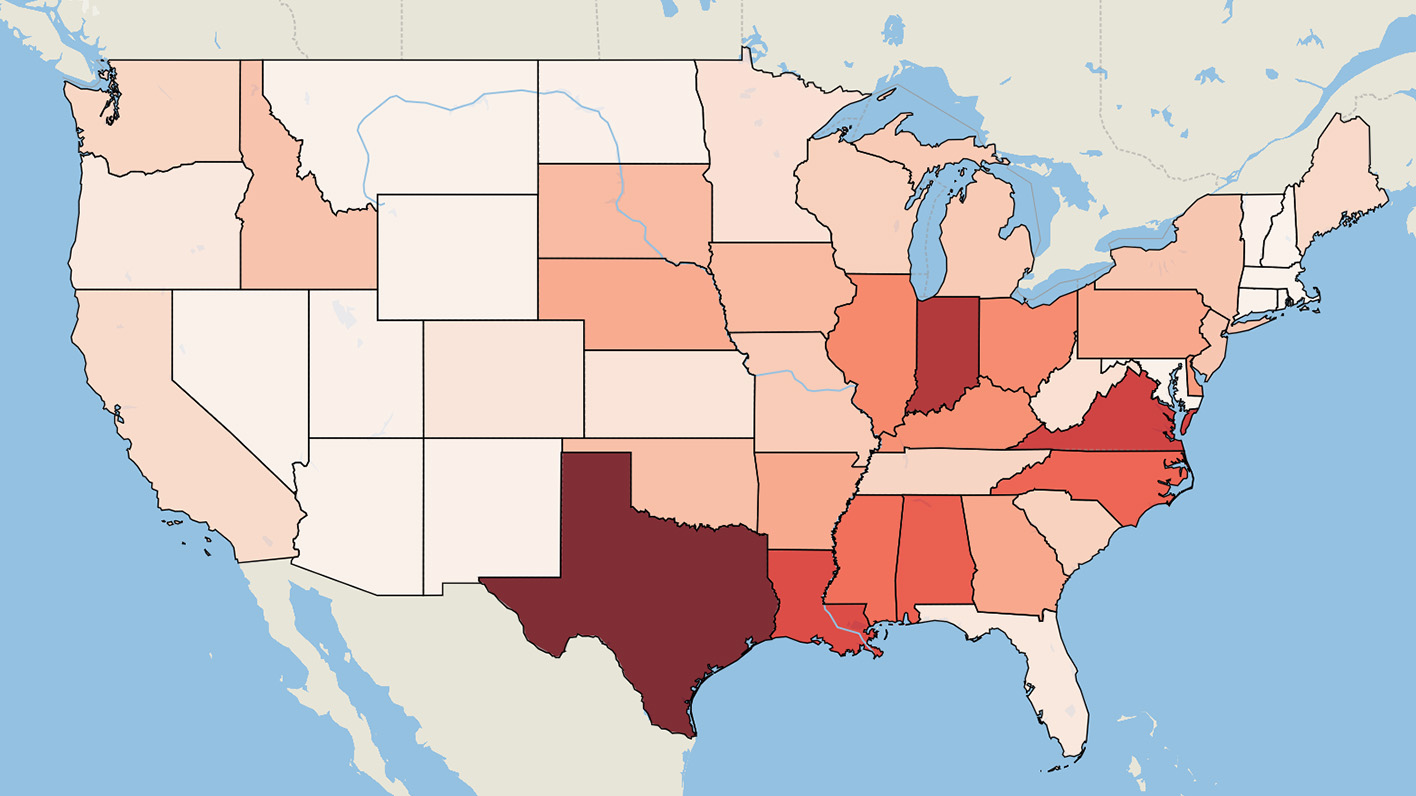
Rough Waters Ahead
The U.S. Environmental Protection Agency has been essential to cleaning up and protecting water quality in the Great Lakes, but the Trump administration has proposed deep cuts to the EPA’s budget. Rough Waters Ahead provides case studies of how the EPA has been critical to ensuring clean water in the Great Lakes, and why the proposed budget could undermine the agency’s ability to deter pollution and restore iconic waterbodies such as the Great Lakes.

Downloads
Another version of the Rough Waters Ahead report is available for the Delaware River Basin.
The Great Lakes are critical to the health and welfare of our families, our communities, and wildlife. Lakes Erie, Ontario, Huron, Michigan and Superior make up the largest system of freshwater lakes in the world and supply more than 40 million people with drinking water.
Today, many areas of the Great Lakes are clean enough for fishing and swimming. But, it wasn’t always that way. In the mid-20th century, fish were often unsafe to eat and key wildlife populations were declining. It took the dedicated work of local, state and federal governments – along with local residents – to turn the tide and begin the long process of restoring the Great Lakes to health.
The U.S. Environmental Protection Agency has been essential to those efforts – supporting and working with state and local efforts to keep pollution out of our waterways, hold polluters accountable, restore degraded waterways to health, and study and monitor the Great Lakes to ensure their future health and safety.
That progress is now in jeopardy. The Trump administration has proposed deep and devastating cuts to the EPA’s budget. Even if the president’s proposed cuts are scaled back by Congress, they would still have profound negative impacts on the agency’s ability to deter pollution from industrial facilities, agriculture, sewage treatment plants, runoff and other sources, while undercutting efforts to restore iconic waterbodies such as the Great Lakes.
America can’t go back to the bad old days. We need a strong EPA with sufficient resources to support local cleanup efforts and partner with states and communities to protect and restore the Great Lakes.
The Great Lakes are being protected and restored to health with funding and effort from the EPA. The EPA has worked to:
- Restore waterways to health: Industrial pollution contaminated Waukegan Harbor on Lake Michigan with cancer-causing PCBs, creating what the EPA identified in 1981 as the “highest known concentrations of uncontrolled PCBs in the country” and triggering a recommendation that people avoid eating fish caught in Waukegan Harbor. The EPA-funded cleanup has removed many tons of polluted sediment from Waukegan Harbor and other pollution hotspots in the Great Lakes. Today in Waukegan Harbor, after more than 20 years of cleanup, people may now safely consume many of the fish they catch. Cleanup of 27 remaining pollution hotspots across the Great Lakes depends on funding from the EPA.
- Hold polluters accountable: When a pipeline owned by Enbridge Energy Partners LLP ruptured in 2010 near Marshall, Michigan, spilling more than a million gallons of heavy tar sands oil into the Kalamazoo River, the EPA coordinated cleanup of oil from waterways and wildlife—and then pursued Enbridge for Clean Water Act violations. The company paid $62 million in penalties and agreed to spend $110 million on spill prevention measures and operational improvements across the Great Lakes region. The EPA continues to respond to new oil spills.
- Conduct research and educate the public: Agricultural runoff is one of the main culprits behind Lake Erie’s yearly algal blooms that can make water unsafe for drinking or swimming. The EPA funded researchers working with farmers to demonstrate the effectiveness of cultivation practices that reduced nitrogen and phosphorus pollution, showing that shifts in agricultural practices can reduce pollution that causes algal blooms in the Great Lakes while increasing yields for farmers. Continued research into better methods to prevent pollution relies on a well-funded EPA.
- Protect waterways from new threats: If Asian carp, an invasive species with no local predators, become established in the Great Lakes, they could decimate underwater grasses, reduce plankton that provide food for native fish, and overwhelm native fish populations. The EPA is working with other agencies to keep Asian carp out of the Great Lakes, helping to erect barriers and monitor waterways for carp. Since 2010, the Great Lakes Restoration Initiative, funded through the EPA, has spent $56.6 million to control, monitor and research Asian carp and their potential impacts on the Great Lakes. Continued funding is essential to the EPA’s continued success at keeping Asian carp out of the Great Lakes.
Table ES-1. How Clean Water in the Great Lakes Depends on the EPA
| The Great Lakes Are Cleaner Because the EPA: | The EPA Continues to Protect Clean Water by: |
| Is working to keep Asian carp from entering the Great Lakes | Monitoring for invasive species |
| Led cleanup of oil spill in the Kalamazoo river, fined the company that caused the spill and improved company practices | Responding to new spills across the region |
| Reduced raw sewage pollution by a major Ohio water utility | Overseeing infrastructure upgrades to limit releases of raw sewage |
| Cleaned up PCB contamination in Waukegan Harbor and made fish safer to eat | Cleaning up 27 other pollution hotspots |
| Modified a dam and restored the Middle Cuyahoga River | Funding removal of additional dams across the region |
| Supported research to develop faster water quality testing at beaches | Supporting research into new threats to water quality |
| Supported research to reduce nutrient pollution from agriculture | Supporting research into new pollution control methods |
| Slashed mercury pollution, making more fish safe for people to eat | Pursuing reductions in mercury emissions from international sources |
The Trump administration’s proposed cuts to the EPA budget put these and other critical functions in danger – threatening the future health of the Great Lakes.
- Under the administration’s proposal, water-related programs run directly by the EPA would be slashed by 34 percent, hobbling efforts to prevent runoff pollution, monitor water quality, establish pollution limits, protect watersheds and wetlands, and pursue polluters.
- In addition, many federal grants from the EPA to state governments for clean water would be slashed by 30 percent or more – making it more difficult for already cash-strapped state agencies to do their jobs and delaying important locally led cleanup efforts. For example, the proposed budget would end grants to state governments and tribal agencies to address pollution from farms, stormwater runoff and other dispersed sources.
- Research and development funding would be cut by 47 percent, limiting support for scientists, residents and local communities trying to understand the ever-changing threats facing their waterways. For instance, the EPA’s Safe and Sustainable Water Resources research program, which supports science and technology research to protect drinking water, would be cut by more than a third.
- Funding for the Great Lakes Restoration Initiative, which supports cleanup efforts like that in Waukegan Harbor and extensive other efforts to protect clean water, would be eliminated.
- Overall, the EPA budget would be reduced by 31 percent.
Even if Congress makes some of these budget cuts less drastic, the Great Lakes will still suffer without full funding of EPA programs.
Table ES-2. Estimated EPA Grant Funding Losses to Great Lakes States if Trump Administration’s Proposed Budget Is Enacted (table shows selected programs)*
|
State |
Estimated Lost Funding for Water Pollution Control Grants |
Estimated Lost Funding for Nonpoint Pollution Control Grants |
Estimated Lost Funding for Drinking Water Protection and Enforcement Grants |
|
Illinois |
$1,569,900 |
$6,397,000 |
$912,600 |
|
Indiana |
$859,200 |
$4,237,000 |
$584,700 |
|
Michigan |
$2,637,300 |
$1,987,970 |
$1,234,500 |
|
Minnesota |
$1,379,400 |
$2,711,850 |
$743,700 |
|
New York |
$2,271,300 |
$5,799,513 |
$1,320,600 |
|
Ohio |
$1,541,400 |
$4,388,897 |
$793,800 |
|
Pennsylvania |
$1,795,200 |
$4,653,006 |
$1,226,100 |
|
Wisconsin |
$1,929,600 |
$4,023,001 |
$1,041,600 |
|
TOTAL |
$13,983,300 |
$34,198,237 |
$7,857,600 |
Note: Estimates are calculated assuming EPA budget cuts affect all states by the same percentage. Reductions are based on grants from most recent fiscal year.
The job of cleaning up and protecting the Great Lakes is not done. Continuing pollution from sewer systems, industrial facilities and runoff – along with the emergence of pollution threats from new classes of industrial and household chemicals – call for continued vigilance and action. A well-funded EPA is critical to continuing progress in cleaning up the Great Lakes and ensuring that they are healthy and safe for us and future generations to enjoy.
* Correction (11/28/17): Information in Table ES-2 and Table 1 has been updated. “Estimated Lost Funding for Water Pollution Control Grants” has been corrected for New York and Pennsylvania, and the total in that column updated. As a result of a data analysis error, the original version of the report underestimated potential lost funding in those two states.
Topics
Authors
Elizabeth Ridlington
Associate Director and Senior Policy Analyst, Frontier Group
Elizabeth Ridlington is associate director and senior policy analyst with Frontier Group. She focuses primarily on global warming, toxics, health care and clean vehicles, and has written dozens of reports on these and other subjects. Elizabeth graduated with honors from Harvard with a degree in government. She joined Frontier Group in 2002. She lives in Northern California with her son.
Katherine Eshel
Policy Analyst
Find Out More

Good intentions, bad outcomes. Six ways impervious surfaces harm our cities and the environment

Safe for Swimming?

The Threat of “Forever Chemicals”

